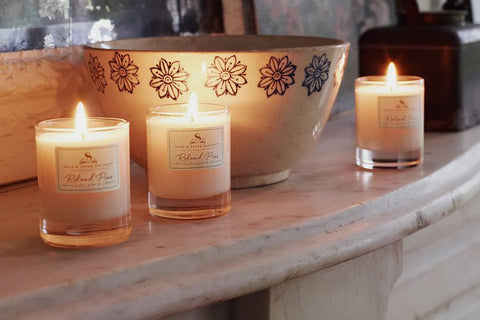The History of Candles: Illuminating the Past

Candles have been a source of light, warmth, and comfort for humanity for thousands of years. From their humble beginnings as crude torches to the sophisticated wax creations of today, the evolution of candles mirrors the progress of civilization itself. Join us as we embark on a fascinating journey through the history of candles, exploring their origins, development, and enduring significance throughout the ages.
Ancient Origins
The use of candles dates back to ancient civilizations, where early humans discovered the illuminating properties of fire. One of the earliest known forms of candles was the primitive torch—a bundle of sticks or reeds dipped in animal fat or tallow, which provided a rudimentary source of light.
The ancient Egyptians are credited with developing some of the earliest candle-like objects, using rushes soaked in animal fat as makeshift torches. These early candles were primarily used for illumination in homes, temples, and tombs, as well as for religious ceremonies and rituals.
Ancient Innovations
As civilizations advanced, so too did the technology and craftsmanship of candle-making. The ancient Romans are credited with introducing significant innovations to candle production, such as the use of molded candles made from tallow or beeswax. These molded candles were more consistent in size and shape, making them easier to handle and store.
During the Middle Ages, candle-making became an essential trade, with candle-makers (chandlers) producing candles for both practical and religious purposes. Beeswax candles, prized for their clean and bright flame, were often used in churches and monasteries, while tallow candles remained popular among the general population due to their affordability.
Renaissance and Enlightenment
The Renaissance era brought further advancements to candle-making, with the introduction of new materials and techniques. Beeswax and tallow remained the primary ingredients, but innovations such as the use of molds and wicks made from cotton or hemp improved the quality and performance of candles.
The Enlightenment period saw a surge in demand for candles, driven by the growth of urban centers and the expansion of trade and commerce. Candles were used not only for illumination but also for signaling, timekeeping, and decorative purposes. The development of candle-making machinery and the standardization of wax production further propelled the industry forward.
Industrial Revolution and Modernization
The Industrial Revolution of the 18th and 19th centuries revolutionized the candle industry, with the invention of steam-powered machinery and mass production techniques. Paraffin wax, a byproduct of petroleum refining, emerged as a popular alternative to traditional beeswax and tallow, offering a cheaper and more readily available source of fuel.
The 20th century brought further innovations to candle-making, including the introduction of synthetic waxes, scented candles, and decorative designs. Today, candles come in a myriad of shapes, sizes, and scents, catering to diverse tastes and preferences.
The history of candles is a testament to human ingenuity and resourcefulness, spanning millennia of innovation, craftsmanship, and cultural significance. From the simple torches of ancient civilizations to the sophisticated creations of modern times, candles have illuminated our homes, temples, and lives, casting a warm glow on our shared history. As we look back on the journey of candle-making through the ages, we gain a deeper appreciation for these humble yet indispensable sources of light and warmth.

